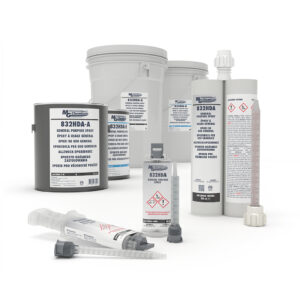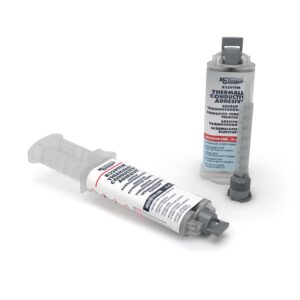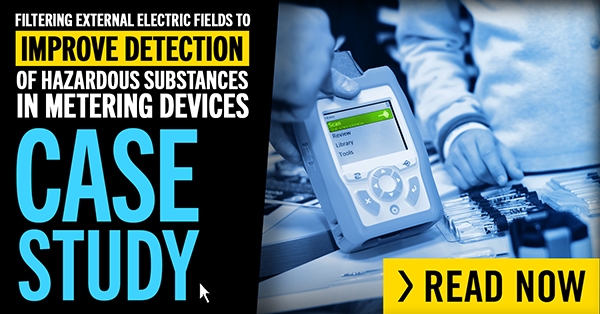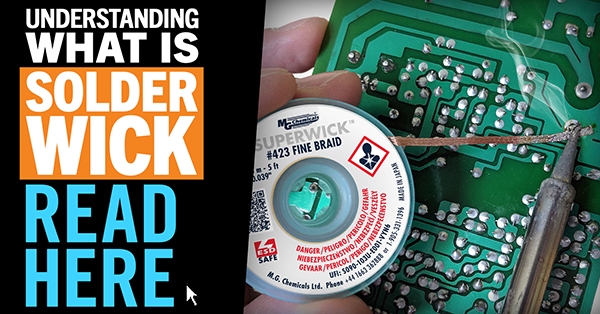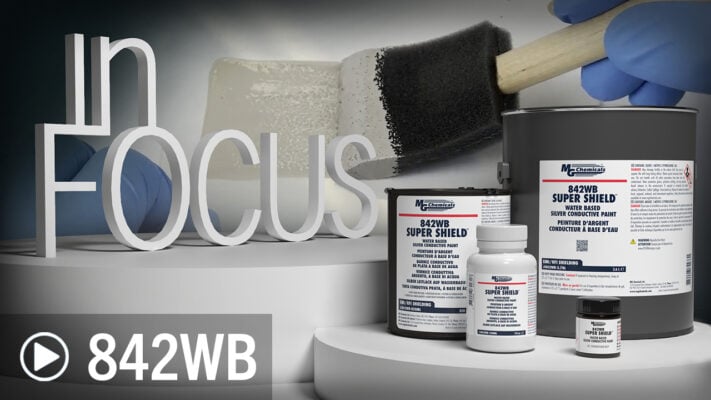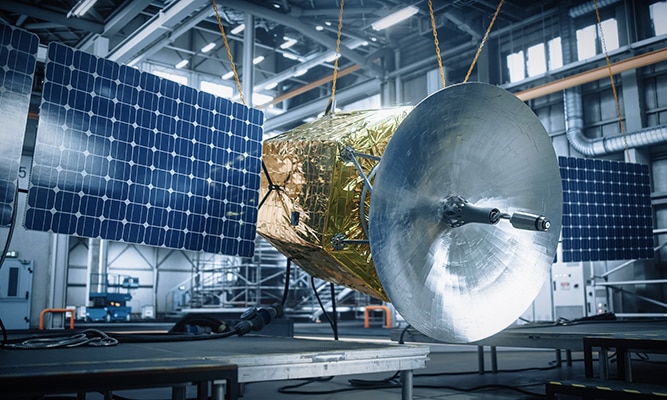
Improving Material Reliability in Harsh Conditions
There are certain industrial segments where equipment reliability is critical. Protecting the electronic circuitry that governs essential functions for the aerospace and defence industry is key to ensuring reliability, longevity and performance. Protective polymer materials such as coatings, greases and adhesives help safeguard electronic malfunctioning from common issues such as electrical shorting, electromagnetic interference, overheating and structural fatigue. The exceptionally harsh conditions in which the aerospace and defense industry serves compel designers to select materials that can withstand challenging operating environments carefully. These conditions include aggressive thermal cycles, interference from electromagnetic and radio frequencies, exposure to moisture, fungus and chemicals and protection from physical shocks and impacts. The following paragraphs highlight the advantages of using MG Chemicals’ extensive product portfolio to ruggedize electronics within the aerospace and defense industry, which includes actual case studies.
Making it Stick on Land, in Air and Outer space
The primary function of an adhesive is to bond two surfaces together sufficiently enough to provide a functional mechanical hold. Adhesives with secondary features such as flame retardancy, thermal conductivity, electrical conductivity and low outgassing are essential for the aerospace and defence industry.
Structural adhesives, whose core function is to provide strong adhesion, can help simplify the assembly of modular components, such as the outer panels for hypersonic systems. High-modulus options like our 9200, 9310 and 8332 provide the mechanical hold needed to maintain structural integrity in high-velocity systems.
Electrically conductive adhesives are 2-part epoxy systems loaded with silver flakes, used mainly to fabricate electrical traces or as gap fillers to bridge conductive surfaces. These adhesives also provide shielding from electromagnetic and radio frequency interference (EMI/RFI). This protection is essential for low-earth orbiting (LEO) satellites exposed to high-intensity solar radiation requiring significant EMI shielding. Products like our 8330D and 8330S are ideal materials with their high filler level and exceptional EMI shielding.

Ancillary to its EMI shielding capabilities, the 8330S is a low outgassing adhesive which meets the NASA standard for outgassing. Outgassing is a phenomenon where volatile polymer materials can sublimate – especially problematic in the low-pressure environment of outer space – and subsequently condense onto neighboring components, causing signal loss. MG Chemicals has low outgassing adhesives, which have particular utility with aerospace applications. Table 1 summarizes results from outgassing testing per ASTM E 595. Reported values are the % change from the sample’s starting mass.
|
|
Total Mass Loss |
Collectable Volatile Condensed Matter |
Secondary Feature |
|
0.40 |
0.03 |
Electrically conductive |
|
|
0.78 |
0.07 |
Thermally conductive |
|
|
LTR 495LV |
0.15 |
0.03 |
Thermally conductive |
|
RTV142 |
0.21 |
0.02 |
Low modulus |
|
RTV566 |
0.10 |
0.02 |
High Temperature |
Table 1: List of adhesives that meet the NASA qualification as low outgassing per ASTM E 595 standard
EMI Coatings to Ensure Satellite Operations
Like every industry, thermal management within aerospace is a considerable challenge as miniaturization coupled with advanced computing capabilities produce massive amounts of data whose by-product is heat. Such is the case for mapping systems that help guide drones and other unmanned aerial vehicles in GPS-free zones. Thermally conductive adhesives like our 8349TFM help prevent overheating, ensuring the continued fidelity of these vital systems.
Communication is critical to help sustain the operations of modern electronics within aerospace and defense. Especially important are the transmitter/receiver systems governing many mission-critical tasks such as radar, GPS and radio communications. Ubiquitous EMI and RFI transmissions threaten these systems as unintended signals can cause malfunction. To counteract this issue, applying EMI coating is necessary to shield devices using electrically conductive materials, which in simplest terms, reflect the incoming electromagnetic waves and prevent their signals from communicating with system receivers. The 841AR nickel conductive coating is a prevalent material used for shielding enclosures for aerial laser detection systems and fibre optic cables that transmit data for aerostat surveillance platforms.

For premium shielding attenuation with extensive durability, products like our 842ER find extensive use in applications such as shielding electrical wiring for interconnect systems.
Protective Coatings for Aerial Electronics
Naturally, protective coatings weigh heavily in aerospace design as the high velocities reached by these vehicles demand coatings capable of protecting the paneling from air friction and erosion while being lightweight to maintain aerodynamics. Equally important, though, is ensuring that the circuits that control all electrical systems function correctly. Therefore, designers use conformal coatings to protect the circuit and ensure the device’s longevity in harsh aerospace and defense environments. Satellites are excellent examples of a device where every material used in its fabrication needs meticulous consideration. Not only are EMI coatings required, as indicated in the previous paragraph, but protective conformal coatings are necessary to protect circuits. The circuits in satellite receivers that monitor signals from outer space are susceptible to failure from environmental damage caused by condensation, sand erosion and fungal decay. Ancillary to environmental attack, protective coatings must not attenuate incoming signals and interfere with the signal’s strength (this is the opposite approach of EMI coatings, whose purpose is to reduce signal strength). To meet this requirement, designers must consider the dissipation factor of the coating, which in simple terms, measures how much strength a signal loses as it passes over a dielectric material. Thermoplastic coatings like our 422B, 422C, 419D and 419E are excellent materials that seamlessly integrate with the demanding requirements of satellite protection.
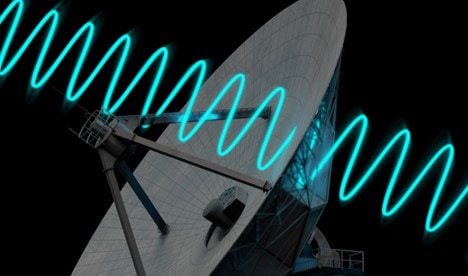
Drones and unmanned aerial vehicles (UAVs) are other aspects of the aerospace industry that rely heavily on conformal coatings to maintain proper function. Specifically, conformal coatings help waterproof critical circuits such as flight and speed controllers, ensuring steady performance in rain, snow and dew.
Greases and Lubricants for Aerospace
It is intuitive that grease and lubricants would be included in the design of drones, rockets and satellite systems; however, in addition to reducing component wear from friction, the properties of our electronics-grade grease help facilitate intricate circuit design. Our 860 silicone grease, for example, helps with dissipating heat in 4-stroke engines for lightweight Cessna planes. Widely used within the automotive and marine industries is our 8462 dielectric grease due to its extreme hydrophobicity and dielectric properties that help prevent electrical arcing and shorts. This product has similar usage within the aerospace and defense, helping seal connectors around SATCOM panels and plugs in ground control units for drones and other UAVs.

